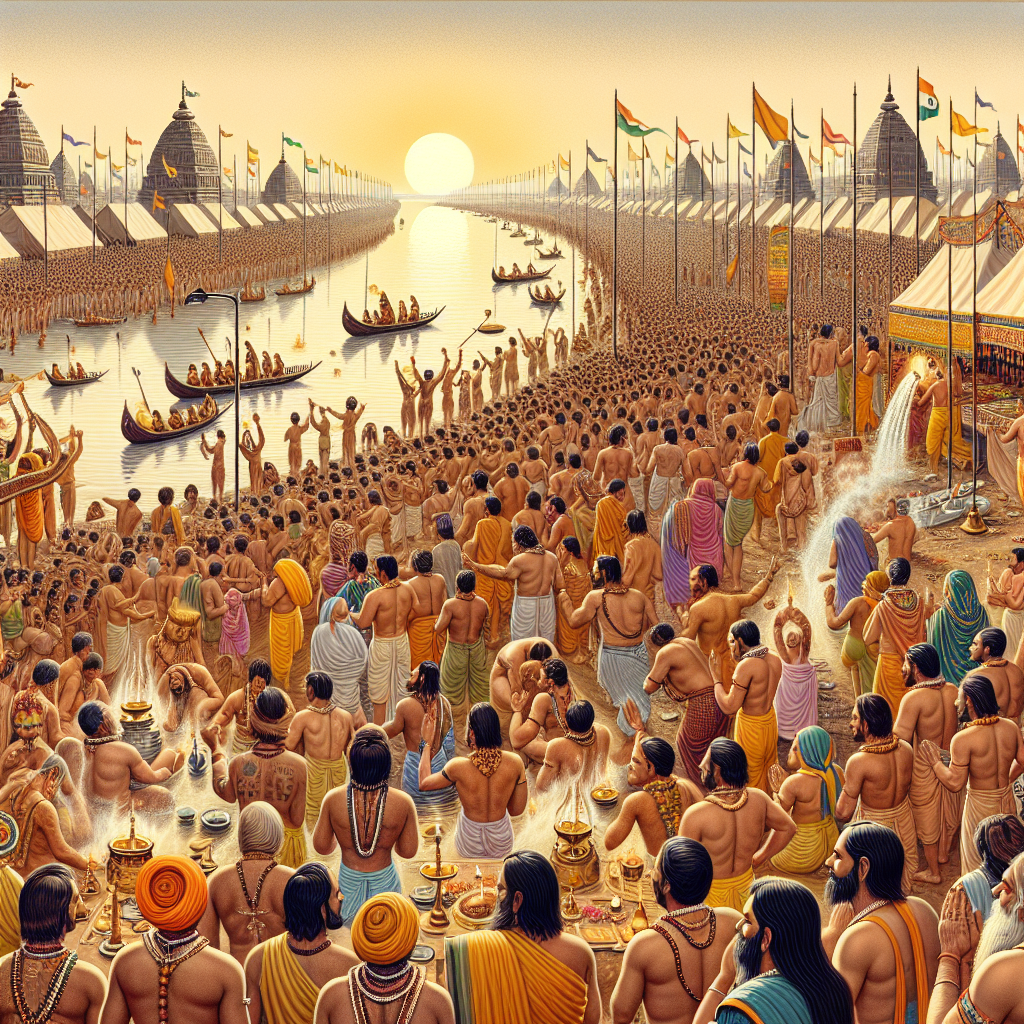The Mahakumbh Mela, one of the largest religious gatherings in the world, draws millions of devotees from various backgrounds to the banks of sacred rivers in India. It is held every twelve years and is renowned for its vibrant rituals, sacred bathing, spiritual discourses, and a profound sense of community among pilgrims. This grand festival is not just a religious observance; it is a tapestry of tradition, spirituality, and devotion that binds together generations of believers.
The Significance of Mahakumbh
Mahakumbh is celebrated at four locations: Haridwar, Prayagraj (Allahabad), Nashik, and Ujjain. Each site is deemed sacred due to its historical and mythological significance related to Hindu cosmology. According to ancient texts, during the churning of the ocean (Samudra Manthan), drops of amrit (nectar of immortality) spilled at these locations, making them sites of divine energy and cleansing.
The festival revolves around the belief that bathing in the holy waters during the Kumbh and Mahakumbh washes away sins and brings spiritual liberation, or moksha. The depth of this belief fuels the fervor of the festival, as millions embark on pilgrimages, often traveling vast distances.
Rituals and Rites of the Mahakumbh
1. Shahi Snan (Royal Bath)
The Shahi Snan holds the utmost significance during the Mahakumbh, often occurring on specific auspicious dates as determined by astrological calculations. This ritual involves a ceremonial bath led by the Akharas (ascetic orders), with key saints and leaders adorned in traditional attire, symbolizing their spiritual authority.
As the sun rises, devotees gather along the riverbanks, forming a sea of humanity. The atmosphere brims with devotion as singing, chanting, and even ancient rituals unfold. The sacred act of bathing signifies purity, spiritual rejuvenation, and a connection with divinity.
2. Processions and Parades
The Mahakumbh is also marked by grand processions, where Akhara leaders display their spiritual prowess, often through elaborate costumes and rituals. These processions are accompanied by musicians, singers, and dancers, creating an atmosphere charged with spirituality and celebration.
Each Akhara showcases its unique traditions and deities, signifying brotherhood among followers while honoring the shared heritage of Hinduism. The participation of political and spiritual leaders adds another dimension, reflecting the festival’s socio-political significance.
3. Homa (Fire Rituals)
Fire ceremonies, or homas, are integral to the Mahakumbh, representing the element of Agni (fire), which is believed to purify and sanctify. Homas are performed to invoke blessings from deities, seek forgiveness for sins, and express gratitude. The chanting of Vedic mantras during these rituals further amplifies the spiritual energy in the atmosphere, creating a profound sense of connection with the divine.
4. Spiritual Discourses and Satsangs
In addition to physical purification, the Mahakumbh also emphasizes spiritual elevation. Spiritual leaders and gurus hold discourses and satsangs (spiritual gatherings) where they share wisdom from sacred texts, discuss ethical living, and guide devotees on the path to enlightenment. These sessions are often characterized by deep philosophical discussions, devotional singing, and interactive sessions, fostering community learning and engagement.
5. Charity and Service
The essence of any pilgrimage is not just individual salvation but also service to others. At the Mahakumbh, this spirit manifests through various charitable acts, where devotees distribute food (anna dan), clothing, and medicines to the less fortunate. This tradition of selfless service, known as "seva," reflects the principles of compassion and altruism ingrained in Hindu philosophy.
6. Pilgrimage Customs
While the main rituals attract significant attention, the personal practices of devotees also hold immense significance. Many undertake long journeys on foot, discipline their bodies through fasting, or engage in penance. Some may even stay in temporary ashrams or camps, forging bonds of community that last long after the festival. The experience is not merely about participating in rituals but also about embarking on a transformative journey of self-discovery and devotion.
Conclusion
The Mahakumbh Mela is a living testament to the spiritual fabric of India, interweaving ancient traditions, communal harmony, and personal devotion. The rituals and rites observed during this grand celebration not only serve the purpose of seeking divine blessings but also reinforce the values of compassion, service, and introspection among millions of devotees.
As the next Mahakumbh approaches, it invites both seasoned pilgrims and new seekers to partake in this extraordinary spiritual journey, where faith, culture, and humanity converge, echoing the timeless message of unity in diversity. The experience of Mahakumbh is one that transcends mere participation; it transforms lives and deepens connections—to oneself, to the cosmos, and to the collective human spirit.

